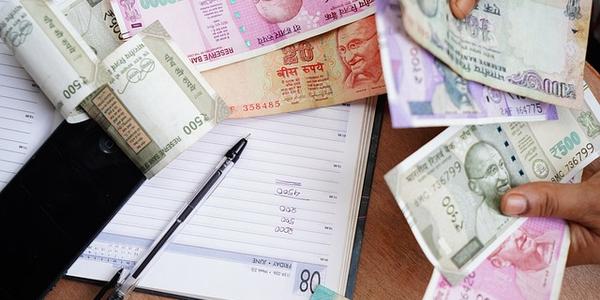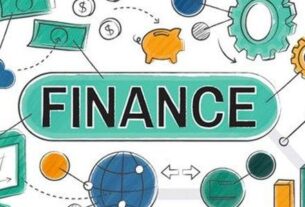Malaysia is moving to elevate its defence relationship with South Korea from a traditional partnership into a strategic, practical alliance that spans industry collaboration and advanced technology. Defence Minister Datuk Seri Mohamed Khaled Nordin outlined a clear path: deepen defence and security cooperation, extend collaboration into co-development and co-production, and tackle non-traditional threats such as cybercrime. The shift reflects a shared commitment to peace, security, and rapid technological advancement, aligning Malaysia’s security needs with South Korea’s world-class defence capabilities. The ambition, articulated during the Malaysia-Korea Third Defence Industry Cooperation Seminar, signals a milestone in bilateral relations and signals a readiness to translate goodwill into tangible outcomes. The minister emphasised that Malaysia is prepared to learn from South Korea’s expertise and to pursue technology transfer that can accelerate domestic capabilities while expanding regional stability.
Elevating defence ties to a strategic and practical partnership
The minister’s keynote framed the Malaysia-South Korea partnership as one that has grown in strength and significance, moving beyond routine dialogue to a deliberate strategy that integrates industry cooperation with national security objectives. He stated that the transition to a strategic-level partnership is underpinned by a commitment to practical outcomes, including closer collaboration in the defence industrial landscape and a proactive stance against emerging threats that lie outside conventional battlefields. In making the case for greater collaboration, he underscored the importance of moving from formal assurances to concrete projects that yield measurable security and economic benefits. Malaysia’s approach is to harness Korea’s established capabilities in aerospace, surveillance, cyber defence, and advanced manufacturing to bolster domestic industries, expand export potential, and create a more resilient security architecture.
The minister noted that dialogue remains essential, but it must be accompanied by decisive action. He argued that turning goodwill into outcomes requires more than statements of intent; it requires structured partnerships that enable knowledge transfer, joint development, and shared production capabilities. In this sense, the evolving partnership is framed as a collaborative journey rather than a one-off agreement, with both nations bearing responsibilities to advance industry standards, ethics, and practical implementation. He also observed that the timing is favourable given the broader security environment, which is increasingly defined by cyber and cyber-enabled risks, as well as threats emerging in space and across the electromagnetic spectrum. The aim is to ensure national security while contributing to regional peace and stability through robust, cooperative capabilities.
A key emphasis of the minister’s remarks was recognition of South Korea as a trusted friend and capable partner, with Seoul’s defence sector spanning aerospace, surveillance, cyber defence, and advanced manufacturing. The minister articulated a philosophy of partnership that goes beyond procurement, stressing the importance of mutual learning and capability-building. He stated that Korea’s guidance and friendship could turn Malaysia’s defence industry aspirations into tangible achievements. The approach signals a longer-term commitment to a diversified portfolio of collaboration that includes not only equipment purchases but also technology transfer, joint ventures, and cooperative production initiatives. This broader vision seeks to cultivate a robust defence ecosystem within Malaysia that can sustain high-value jobs, nurture local innovation, and strengthen security for the wider region.
Technology transfer, co-development, and co-production
A central element of the strategic shift is Malaysia’s readiness to embrace technology transfer and pursue co-development and co-production arrangements. The minister highlighted that such arrangements enable Malaysia to cultivate domestic capabilities while benefiting from South Korea’s advanced R&D pipelines and manufacturing processes. The emphasis on technology transfer signals a desire to upskill the Malaysian workforce, develop homegrown industrial bases, and reduce dependence on external supply chains during times of global disruption. Co-development and co-production are framed as pathways to generate new competencies, unlock export opportunities, and embed security considerations into the earliest stages of defence innovation.
The focus on industrial collaboration also aligns with a broader objective to diversify Malaysia’s defence ecosystem. By engaging with South Korea across multiple sectors—ranging from aerospace to cyber defence and advanced manufacturing—Malaysia seeks to create a more resilient and adaptable industrial base. This approach is designed to foster sustainable growth, attract private sector investment, and cultivate a pipeline of skilled workers who can support both defence and civilian industries. The minister stressed that such collaboration is not merely about acquiring hardware; it is about building a long-term capability framework that enables Malaysia to participate more fully in the global defence supply chain.
Non-traditional threats and strategic foresight
The strategic partnership is being framed within the context of non-traditional threats, including cybercrime and the widening scope of warfare into cyberspace and space. The minister pointed out that contemporary security challenges require sophisticated, technologically driven responses that can anticipate and mitigate evolving risks. By partnering with South Korea, Malaysia aims to develop capabilities that address these threats across the entire spectrum—from secure communications and intelligence sharing to advanced surveillance and rapid, resilient manufacturing processes. The emphasis on non-traditional domains reflects an understanding that peace and stability increasingly depend on resilient digital and industrial ecosystems as much as on conventional military deterrence.
The broader objective is to ensure that military and security capabilities contribute to regional stability. The minister highlighted that successful cooperation in these areas could yield benefits beyond Malaysia’s borders, supporting peace and security in the wider region by demonstrating credible, collaborative defence innovation. In this context, the strategic partnership is not just about aligning military hardware; it is about building a shared security framework that leverages technology, governance, and industry to reduce vulnerabilities and strengthen collective security.
Building a strategic industrial partnership and addressing non-traditional threats
The collaboration also envisions a robust industrial dimension that links government strategy with private-sector execution. The minister stressed that the purpose of the partnership is not only to procure equipment but to cultivate an ecosystem in which knowledge, technology, and manufacturing capabilities are transferred and scaled. This ecosystem would bring together Malaysia’s public sector, universities and research institutions, and private defence firms with South Korean counterparts to accelerate innovation, standard-setting, and the deployment of advanced solutions within Malaysia’s security architecture.
Industry sectors and capabilities
Aerospace, surveillance, cyber defence, and advanced manufacturing were identified as key sectors where South Korea’s expertise aligns with Malaysia’s development priorities. The partnership aims to leverage Korea’s experience in high-precision manufacturing, predictive maintenance, and integrated systems to uplift Malaysian capabilities. Building such capacity could enable more domestic value creation, including possible local assembly, integration, and maintenance hubs. The collaboration is intended to create opportunities for Malaysian firms to participate in joint ventures and to supply components, systems, and services that meet international standards.
This sectoral focus also has potential spillover effects for civilian industries. Transfer of knowledge and technology in fields like sensors, data analytics, AI-enabled platforms, and digital engineering can bolster Malaysia’s broader industrial base, diversify the economy, and support workforce upskilling. The strategic partnership thus serves a dual purpose: strengthening national security while catalyzing economic development and technological advancement.
Co-development, co-production, and industry ecosystems
Co-development and co-production arrangements are envisaged as catalysts for expanding domestic capabilities. They offer pathways for Malaysia to participate more actively in the defence value chain, moving from importer to co-innovator and co-producer. Such arrangements can help accelerate time-to-market for critical solutions and foster a competitive domestic industry capable of sustaining long-term security requirements. The ecosystem approach emphasizes collaboration across public and private sectors, academia, and international partners to align research priorities, standardisation, and procurement timelines with national security needs.
Additionally, the emphasis on a robust industry ecosystem aligns with governance and compliance goals. It requires clear frameworks for technology transfer, intellectual property, export controls, and safeguarding sensitive information. The collaboration is expected to advance not only capability development but also the regulatory and ethical standards that underpin responsible defence innovation. In doing so, Malaysia seeks to balance rapid capability growth with accountability and transparent governance, ensuring that strategic gains are sustainable and aligned with regional norms.
Government-to-government procurements and collaboration philosophy
A core element of the evolving partnership is the Government-to-Government (G2G) procurement framework being expedited as part of the strategic alignment. The minister stated that the Malaysian government intends to table a G2G procurement agreement with South Korea for Cabinet approval by October. If approved, South Korea would become the second country, after Türkiye, to formalize such an exclusive arrangement with Malaysia. This framework aims to streamline procurement processes, facilitate secure and reliable supply chains, and ensure alignment with national strategic priorities. It also reflects the desire for greater predictability, transparency, and efficiency in high-value defence acquisitions while preserving the option for joint development and local capacity-building.
However, the minister underscored that defence procurement under this framework is not merely a purchase transaction. It is about South Korea’s willingness to share, transfer, and assist in building Malaysia’s defence industries and the broader ecosystem. The aim is to move beyond transactional buys to strategic collaboration that strengthens bilateral trust, fosters long-term capacity-building, and accelerates Malaysia’s ability to field sophisticated, locally supported capabilities. The G2G approach is therefore positioned as a mechanism to align national security requirements with foreign-partner strengths, while also encouraging technology transfer, co-design, joint testing, and the establishment of domestic production and maintenance infrastructures.
Implications for regional security and bilateral relations
If advanced, the G2G framework could set a precedent in Southeast Asia for deep, government-led defence partnerships that prioritize industrial co-operation and mutual capacity-building. Such an arrangement would enhance regional security by enabling faster access to trusted technologies and integrated solutions, while also reducing time-to-deploy for critical capabilities. In parallel, it could strengthen bilateral relations by aligning strategic interests, enhancing interoperability, and creating a shared platform for ongoing collaboration across multiple defence domains. The potential for joint research and development programs, mutual maintenance arrangements, and shared training facilities could also amplify long-term strategic ties and foster a more resilient regional security architecture.
The seminar’s role in this process is to translate high-level strategic intent into practical, actionable projects. By bringing together government officials, academics, and industry representatives—from both Malaysia and South Korea—the event creates a space for concrete discussions on AI policies, the application of AI in defence, and future collaboration avenues. The presence of senior government and defence officials from both sides, along with industry stakeholders, supports the construction of a detailed road map that can guide negotiations, define milestones, and specify governance mechanisms. This alignment of policy, industry, and academic expertise is essential to sustaining momentum and ensuring that the partnership translates into tangible capabilities and enduring economic benefits.
Defence industry seminar: AI policy discussions and industry participation
The seminar attracted around 150 participants, including government officials, academics, and defence industry representatives from both nations. Its agenda featured in-depth presentations on artificial intelligence policies and discussions on how AI could be deployed within defence contexts. The conversations explored practical applications of AI to enhance decision-making, reconnaissance, sensor fusion, autonomous systems, and secure communications, while also addressing ethical, legal, and safety considerations. The event provided a platform for exchanging views on how AI governance, standards, and interoperability could be harmonised to support joint projects and ensure responsible innovation.
A significant portion of the gathering was devoted to industry engagement. More than 20 Malaysian defence companies joined forces with representatives from major South Korean defence firms, enabling meaningful exchanges between government bodies and private sector participants. This interaction aimed to identify areas of mutual interest, map out potential collaboration pathways, and lay the groundwork for future joint ventures, technology transfers, and co-production initiatives. The participation of both government and private sector stakeholders underscores the multi-level approach to defence collaboration, which integrates policy alignment, industrial capability, and practical implementation.
The discussions about AI and defence signalled a forward-looking dimension to the partnership. Participants examined how AI technologies could enhance situational awareness, predictive maintenance, and data analytics, while considering the potential risks and safeguards required to protect critical infrastructure. The dialogue also highlighted how such innovations could be scaled across defence and civilian applications, creating synergies that strengthen national competitiveness and security. By addressing AI policy and its defence applications, the seminar helped translate strategic intent into concrete inquiries and collaborative projects that could be pursued in the near term and over the longer horizon.
Attendees, significance, and forward-looking outlook
In addition to the defence minister, the seminar drew attention for the participation of the Ambassador of the Republic of Korea to Malaysia, Yeo Sung-Bae, and Kwon Dae Won, the vice-chairman of South Korea’s Joint Chiefs of Staff. Their attendance underscored the high-level political and military interest in deepening bilateral cooperation and signal the seriousness with which both governments view the partnership. The presence of these senior representatives helped to elevate the dialogue, reinforce mutual trust, and provide clearer political support for the concrete projects and discussions taking place at the seminar. Their engagement indicated an alignment of national security priorities, defence planning, and industrial strategy across the two nations.
The seminar’s outcomes are expected to inform and accelerate the evolution of the Malaysia-South Korea defence partnership. With more than 150 participants and a robust set of industry connections, the event created a networking platform that can yield tangible collaborations, including long-term development deals, technology transfer arrangements, and joint ventures. The collaboration’s scope extends beyond purchasing decisions, aiming to build a sustainable ecosystem that integrates government strategy, military requirements, and private sector innovation. If realized, these efforts could yield a coherent, long-term programme that enhances both countries’ security postures while supporting economic growth and technological advancement in Malaysia and South Korea.
The participation of a broad cross-section of stakeholders—officials, academics, and industry players—was designed to facilitate a holistic approach to defence collaboration. The event highlighted both policy-level commitments and practical implementation steps, enabling participants to identify concrete next steps, align on regulatory and governance considerations, and establish a shared framework for evaluating progress. The seminar’s success will be measured not only by the memoranda or agreements that emerge but also by the quality of ongoing collaboration, knowledge transfer, and capacity-building that such gatherings stimulate.
Conclusion
Malaysia’s move to elevate defence ties with South Korea into a strategic, practical partnership marks a significant evolution in bilateral security cooperation. By emphasising technology transfer, co-development, and co-production, the two nations are charting a course toward a more integrated and resilient defence ecosystem. The planned government-to-government procurement framework, anticipated Cabinet approval, and the broader industrial collaboration signal a commitment to moving beyond transactional engagements toward sustained capacity-building and regional stability. The Malaysia-South Korea Defence Industry Cooperation Seminar, with its emphasis on AI, defence applications, and cross-sector networking, has laid the groundwork for ongoing collaboration and tangible outcomes in the defence industrial arena. As both countries work toward common objectives—security, technological advancement, and economic growth—the partnership has the potential to become a model for regional cooperation that enhances peace, stability, and prosperity across Southeast Asia and beyond.



